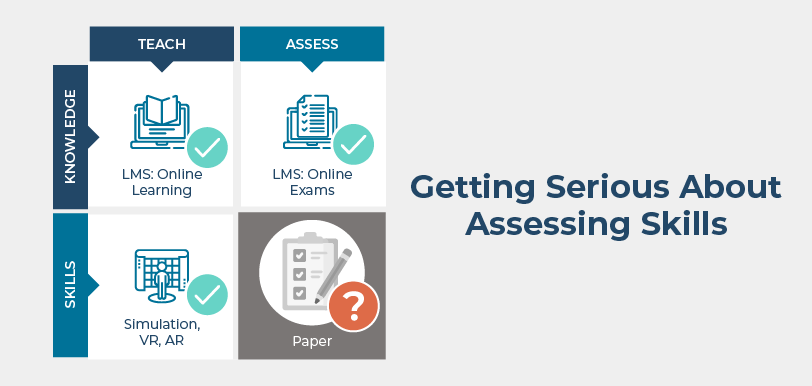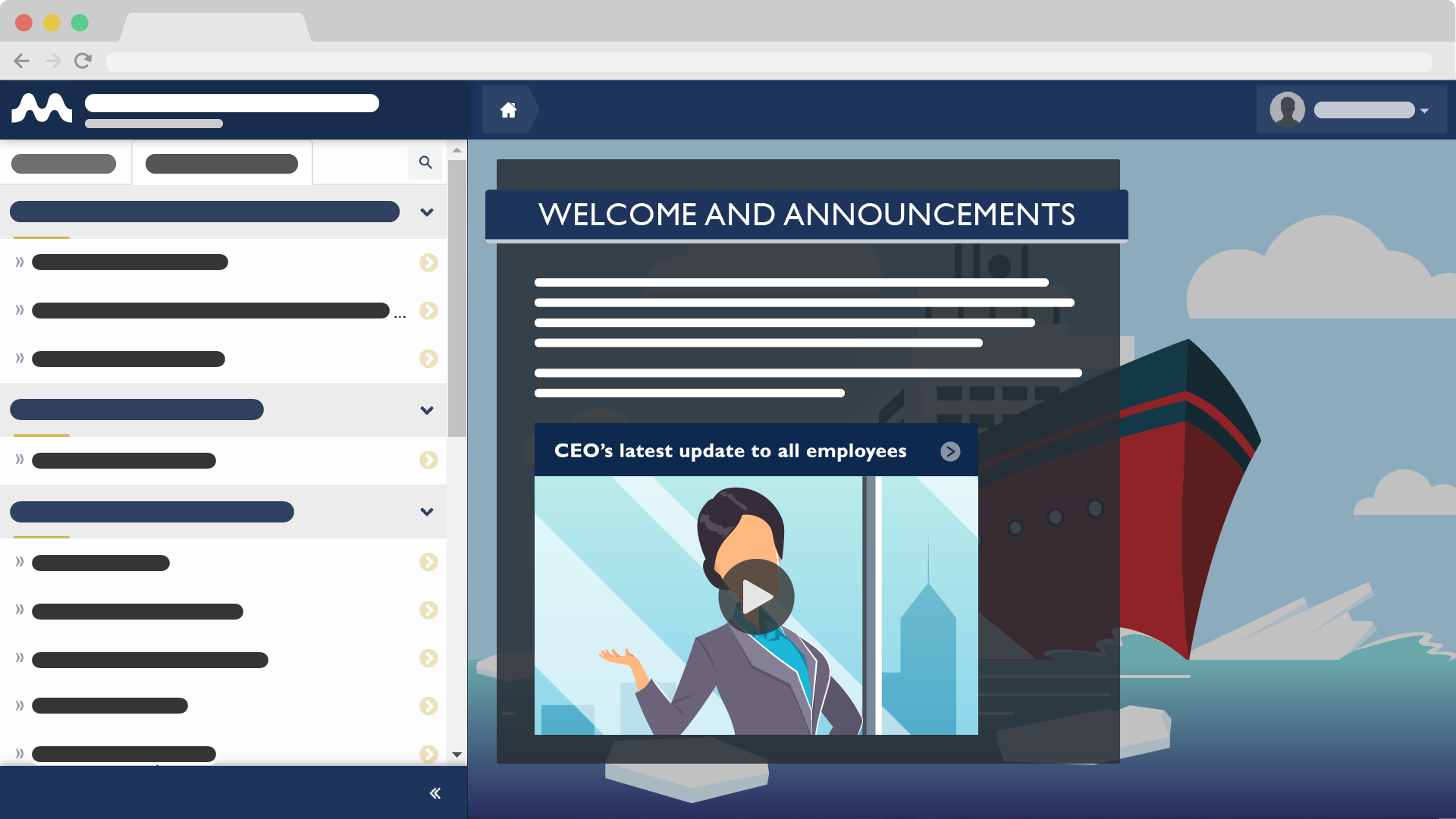Improving Safety Culture and Training: Additional Lessons
Aug 24, 2016 Murray Goldberg 0 change management, Maritime Training, Safety CultureIntroduction
In the first article of this series I began a discussion on what maritime organizations can do to improve training performance and organizational culture without having a large budget to devote to the task. I used as an example an organization of 100 employees which felt as though their training program required attention and decided to do something about it.
In this third and final article on the subject, I am going to cover the remaining lessons derived from this company’s transition to training excellence including: plan ownership, employee involvement, visibility, and training infrastructure. These can serve as valuable guidance to any maritime organization looking to make the transition to a high quality, professional and continuously improved training organization.
If you would like to be notified of future maritime training articles when they come out, and have not already done so, please click here to sign up to receive email notifications.
Recap: What Did They Do?
A full description of the process undertaken by this company can be found in the first article of this series. To quickly recap, the company laid out the following goals:
- Create a “plan of attack” for training in the company that was achievable within their current training budget.
- Determine how the plan itself was managed, when it would be reviewed, who would own it, etc.
- Define the infrastructure needed. For them, this was a learning management system (LMS).
- Initiate one short-term meaningful project to test their new infrastructure, gain experience, begin the process of employee engagement, and have one visible success to help develop some momentum.
The Elements of Success
The approach taken by the company was a highly successful one. There are many lessons to take from their experience, two of which were covered in my previous article. Those were:
- Create a plan, but don’t wait for it to be perfect before getting started.
- Ensure that a process of continuous improvement is a central part of that plan.
The bottom line for those two lessons is that the simple act of getting started can be difficult. If we spend too much time trying to perfect the plan first, there is the real danger that delays, disagreements and planning fatigue will end up making it so the plan is never launched. It is often more effective to create a simple plan initially and ensure that the plan is improved continuously as experience is gained and informed decisions can be made. Avoid the temptation to prematurely optimize your plan.
Let’s look at some of the other useful lessons from this company’s experience:
1. Designate a plan owner.
While having a single owner of the plan may seem simple and obvious, it is important as it avoids the situation when there is a group of people who are responsible for the maintenance of a plan: if everyone is responsible, then no one is responsible.
Ideally, the plan falls to the person in charge of training. That person reports to their immediate superior whose job is to ensure that progress is made and the plan is vetted and followed.
Interestingly, in the case of the example company, the plan was actually owned by a reasonably junior person in training management. Although this person did require a bit of support and guidance, the effect was very positive because of his energy and desire to make a difference. He took the role seriously and spent time reading articles (not unlike this one) on training planning and management. The plan owner matured in training management sophistication and did an excellent job.
So while it may be the case that ideally a highly qualified training manager would be in charge of the plan, this is not always necessary. Anyone with enthusiasm, intelligence, support, and the ability to do a bit of reading can formulate and execute an excellent training plan for a smaller organization.
2. Have an owner, but involve everyone.
For the plan to be successful, it must have input from everyone affected by the plan. That generally means everyone in the company. Obviously it would not be possible to have all employees collaborate on the formation of the plan. However, each person in the company should contribute at an appropriate level.
For example, this company created a core team, chaired by the plan owner, to contribute ideas for the initial plan and to meet regularly to facilitate continuous improvement.
The core team included people from each major department and level including administrative, managerial and operational. The plan owner also included both new and long-time employees, as well as enthusiasts and skeptics. This ensured that progress was never hampered by having to await an opinion or approval. All of the necessary information was around the table. All points of view were considered and most concerns were addressed during planning rather than during roll-out.
The company also involved every employee by delivering questionnaires to collect opinions and by circulating periodic updates on progress. Each employee in the organization was aware of what was happening and had a hand in driving it. This participation created a sense of ownership and anticipation. By the time the plan was put into action, the entire company was aware of it and had a good understating of the goals, the process, and how to provide feedback.
3. Ensure visibility.
The previous point of involving everyone achieved the side effect of making the project very visible in the company. This is an important aspect of change management.
Change affects how employees do their work. Any change can cause apprehension and can therefore be met with resistance. By ensuring that the project has a high degree of visibility even before it is rolled out, employees at the company were able to gain an understanding of (and provide suggestions on) what the effects would be on them. This, combined with an understanding of why the project was important, made the change management process quite smooth.
This is an important point that is difficult to over stress. Moving to blended or e-learning creates a lot of unknowns in the minds of employees. This company’s implementation was among the smoothest I’ve ever seen and I believe this was largely due to the great visibility all employees had into the the project’s importance, goals, process and implementation.
Transparency and involvement are key not only for achieving buy-in, but also to ensure that we are not inadvertently making the lives of any of our employees more difficult as a result of some oversight.
4. Keep your beginnings modest.
This company began with one initial training project to be completed within 6 months. In choosing this first project they made a wise decision to keep the project meaningful, yet modest and low in risk. Limiting the risk in the initial project avoids the possibility of an early and visible failure. Early failures are much harder to overcome, so leave the high risk projects for later – stick to the easy stuff first.
In this case, the company choose to implement an LMS (which was the reason for my involvement) and then create a single course on the LMS – their new hire orientation course. This was low risk because the technology was easy to test, and they already had the material needed for new hire orientation. All that was required was that it be put online using the new LMS. The new hire orientation project:
- Provided some visible benefits to new employees
- Generated useful training metrics which helped inform management where the course could be improved
- Allowed the company to test and get accustomed to their new training infrastructure (the LMS)
- Took them to a point where they now had an implemented eLearning infrastructure and had gained experience delivering e-learning
Taken together this was a significant accomplishment in only 9 months of planning and implementation. And because of the way they went about it, the employees were almost universally positive about the new training direction. Even the skeptics (and there were very few) appreciated the desire to take a much more professional and measured approach to training within the organization.
Conclusion
This company made a significant transition from an ad-hoc training approach to one which was highly professional, predictable, and very well structured. In addition, the use of technology provided metrics which allowed them to put a process of continuous improvement in place. This guaranteed that both the training plan and the training itself would continue to improve, year over year. All that was required was a will to make a change, a few good common-sense decisions, and enthusiasm from the management. Notice that “big budget” was not one of the requirements.
I’ll close by quoting a line from my first article in this series: “If you want to succeed, you need to start sometime. All it takes is a decision to begin. If not now, then when”?
Follow this Blog!
Receive email notifications whenever a new maritime training article is posted. Enter your email address below:
Interested in Marine Learning Systems?
Contact us here to learn how you can upgrade your training delivery and management process to achieve superior safety and crew performance.






